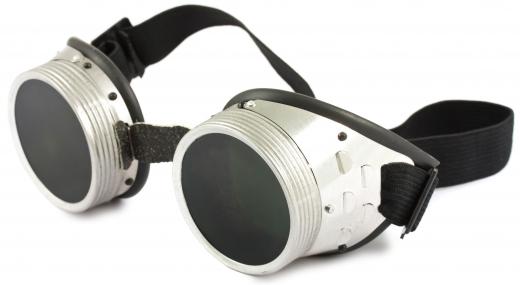At AboutMechanics, we're committed to delivering accurate, trustworthy information. Our expert-authored content is rigorously fact-checked and sourced from credible authorities. Discover how we uphold the highest standards in providing you with reliable knowledge.
What is an Inverter Welder?
An inverter welder is a type of welding power supply capable of providing a high current for welding. The welder uses a series of rectifiers and solid-state switches to convert 60 Hz alternating current (AC) input power into direct current (DC) output power. The amount of output current and voltage available during the welding process is controlled by computer software. An inverter welder weighs considerably less while at the same time consumes less electricity than a comparable traditional welding power supply.
A traditional welding power supply uses a large, iron-core transformer to convert low amperage, high voltage AC into high amperage, low voltage AC. A rectifier is then used to convert the AC into DC for use in the welding process. The transformer in this type of power supply typically needs to be quite large to work correctly.

An inverter welder first uses a rectifier to convert the incoming AC into DC. This current is the switched on and off very quickly, creating a pulsed, high frequency direct current. Typical frequencies range from 10,000 to 20,000 Hz, although frequencies as high as 100,000 Hz are possible. The high-frequency, low-amperage current is fed into a transformer where it is changed into high amperage DC, before being rectified again.

These have several advantages when compared to a traditional welding power supply. Both require a transformer to convert incoming current to suitable welding current, though with an inverter welder, this can be done more efficiently at higher frequencies; as a result, the inverter is able to use a much smaller transformer. The result is a substantial reduction in size and weight. Power consumption also decreases as the more efficient transformer loses less energy to heat. It is possible to run an these welders on typical 115 VAC household current due to lower input voltage requirements.

Due to the higher frequency of the output current, an inverter welder produces a smother arc when welding. Computer software constantly monitors and adjusts current and voltage during the welding process, resulting in a consistent arc. As a result, welding supplies such as electrodes, welding wire and shielding gas typically last longer than when using a traditional welding power supply. Adjustments to current and voltage can be made to accommodate differences in material composition and thickness, giving the welder tighter control over the welding process. It is possible to use an inverter welder to power all welding processes including Stick, Metal Inert Gas (MIG) and Tungsten Inert Gas (TIG).

The reduced size and weight of these welders make them popular choices for applications where a traditional welding power supply would be too bulky or consume too much power. They are commonly used in machinery maintenance facilities and automobile repair shops. Many welding and fabrication shops are replacing their traditional welding power supplies due to the potential cost and space savings afforded by inverter welders. Farmers, as well, are increasingly turning to portable, lightweight units to make on-site repairs.
AS FEATURED ON:
AS FEATURED ON:














Discussion Comments
We have power supply issues in my country and the use of a generating plant is necessary for electricity back up. What is the usual input power required for such inverter welders as this will determine the kind of genset needed to power it during an outage from the public electricity supply corporation. The one I saw in a game store, in Enugu, Nigeria, specifically says it should not be operated on a generator!
Post your comments